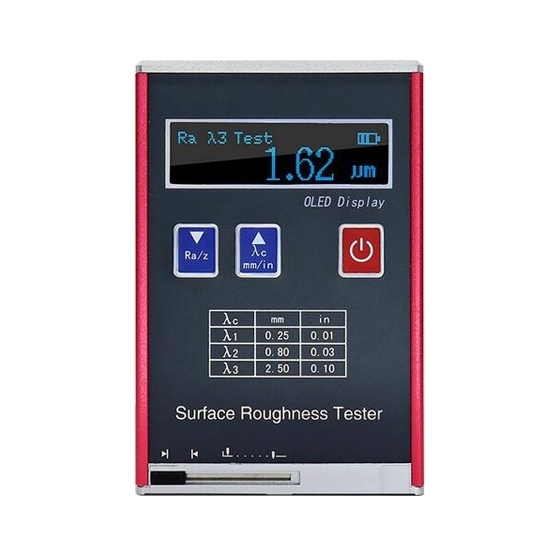
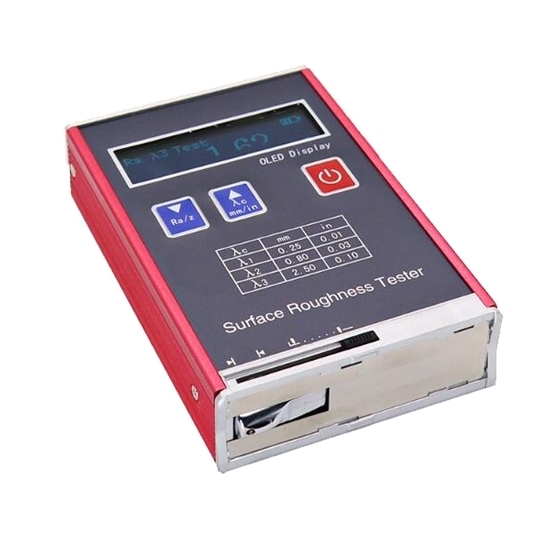
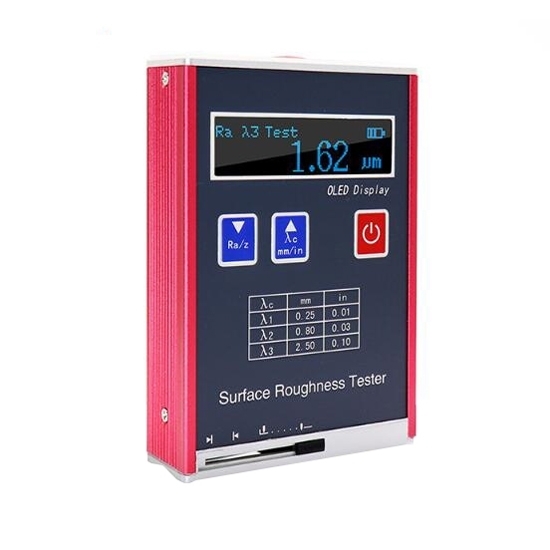
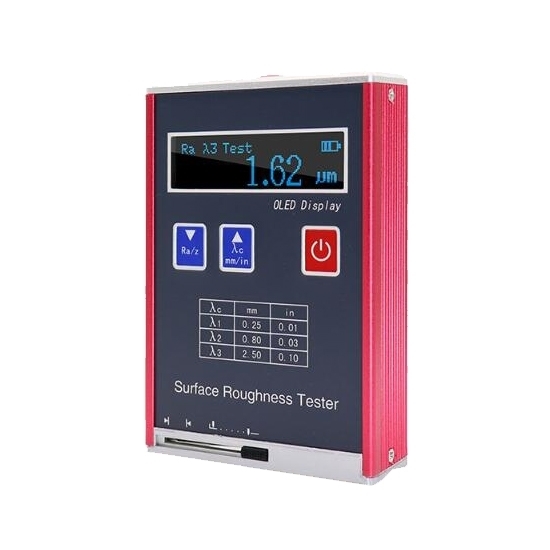
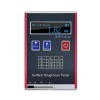
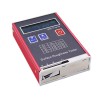
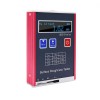
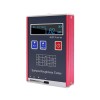
- Stock: In Stock
- Model: RDDLZ-SRT-8100
- Weight: 1.00
- SKU: RDDLZ-SRT-8100
Available Options
The digital surface roughness tester has a compact and portable design that can be taken anywhere in the workplace. Surface finish tester has a built-in 3000mAh lithium-ion rechargeable battery and control circuitry, and supports Bluetooth printing and wireless mobile app operation.The rugged construction of the Pocket roughness tester ensures that it can withstand the toughest working conditions, making it a reliable and long-lasting investment.
Specification
| Model | RDDLZ-SRT-8100 |
| Parameters | Ra, Rz, Rq, Rt |
| Measuring Range | Ra: 0.005-15μm |
| Display Range | Ra, Rq: 0.05-15.0um, Rz, Rt: 0.1-50μm |
| Error Correction Range | One-click measurement correction |
| Resolution | 0.01μm |
| Filter | / |
| Sampling Length | 0.25mm, 0.8mm, 2.5mm |
| Evaluation Length | 5L |
| Drive Stroke | 1.25-17.5mm |
| Measurement Error | ≤±10% |
| Variability | <6% |
| Support for Workpieces | Surface roughness testing machine, curved surface, other special workpieces |
| Display Method | LCD |
| Power Supply | Rechargeable lithium battery |
| Standard Accessories | Host, standard sample plate, test pad, power adapter |
| Accessories Available | Fine axis jig |
| Dimensions | 106x70x20mm |
| Weight | 200g |
Features
- The digital surface roughness tester housing is designed with a drawn aluminium mould for durability and resistance to electromagnetic interference.
- High-speed DSP processor is used for data processing and calculation, which greatly improves the measurement and calculation speed.
- The LCD display features an OLED color display and is suitable for all occasions.
- The surface roughness tester uses a lithium-ion rechargeable battery, which can work for a long time and has a short charging time, making it suitable for field use.
- The pocket surface roughness tester can be charged using a dedicated charger or USB port on a PC, which is convenient and fast.
- Real-time monitoring and display of lithium-ion battery power and reminding the user to charge with charging progress indication.
- The digital surface finish tester can detect external circles, flat surfaces, tapered surfaces and also grooves larger than 80*30mm.
Dimension (Unit: mm)
Details
Applications
Surface roughness testers are commonly used in a variety of industries to measure the roughness of surfaces. RDDLZ portable surface roughness tester has applications in the manufacturing, automotive, aerospace and medical industries, among others.
Tips: What are the types of surface roughness test?
There are several types of surface roughness tests that can be used to measure the roughness of a surface. Here are some common types:
- Contact Profilometers: These instruments use a diamond-tipped stylus to make contact with the surface and measure the roughness parameters.
- Optical Profilometers: These instruments use light to scan the surface and create a 3D image of the surface, from which the roughness parameters can be calculated.
- Atomic Force Microscopy (AFM): This technique uses a small probe to scan the surface and measure the height variations at the nanoscale.
- White Light Interferometry (WLI): This technique measures the height variations of the surface by using the interference patterns of light.
- Laser Scanning Confocal Microscopy (LSCM): This technique uses a laser to scan the surface and create a 3D image of the surface, from which the roughness parameters can be calculated.
- Fringe Projection: This technique projects a fringe pattern onto the surface and measures the surface height variations by analyzing the pattern.
Each of these techniques has its advantages and disadvantages and may be better suited for different applications depending on the required accuracy, resolution, and speed of measurement.
